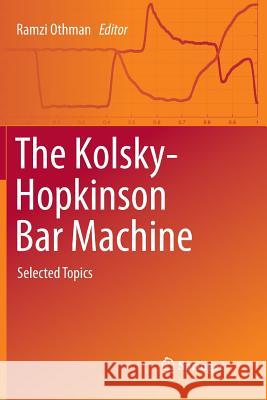The Kolsky-Hopkinson Bar Machine: Selected Topics » książka
topmenu
The Kolsky-Hopkinson Bar Machine: Selected Topics
ISBN-13: 9783030101305 / Angielski / Miękka / 2019 / 282 str.
Kategorie:
Kategorie BISAC:
Wydawca:
Springer
Język:
Angielski
ISBN-13:
9783030101305
Rok wydania:
2019
Wydanie:
Softcover Repri
Ilość stron:
282
Waga:
0.42 kg
Wymiary:
23.39 x 15.6 x 1.6
Oprawa:
Miękka
Wolumenów:
01
Dodatkowe informacje:
Wydanie ilustrowane











